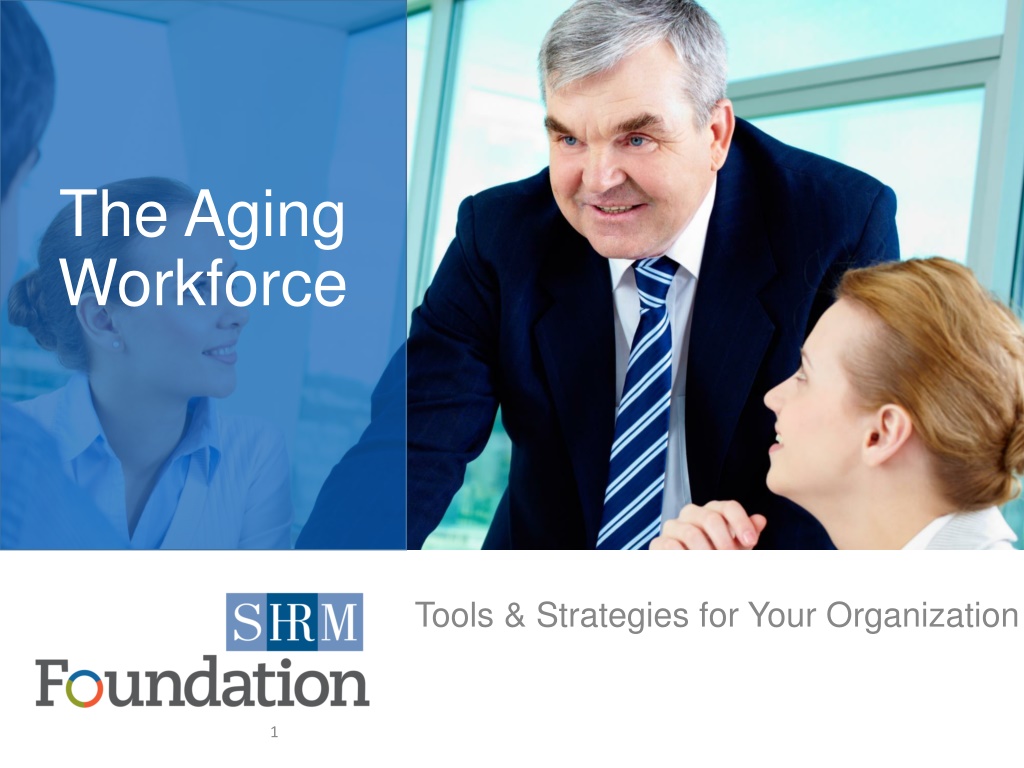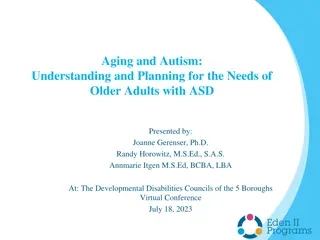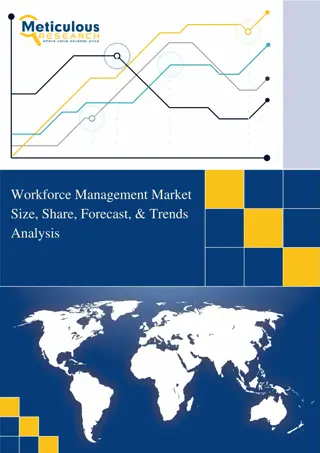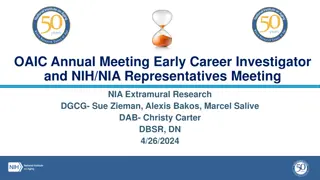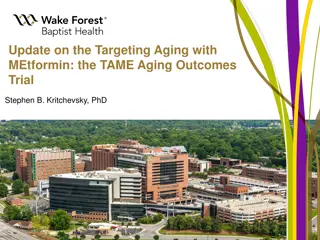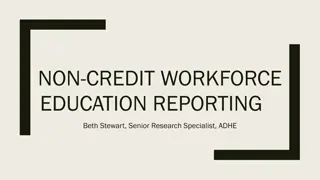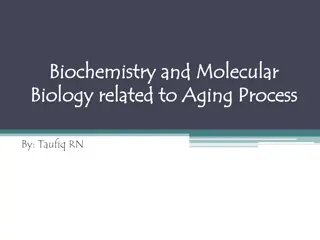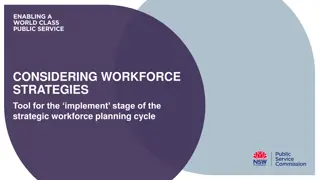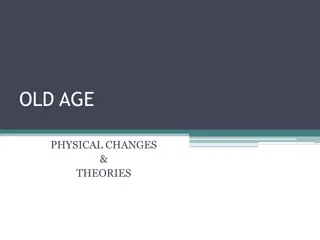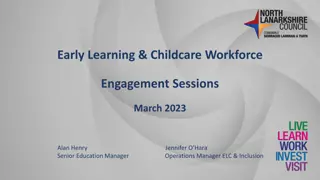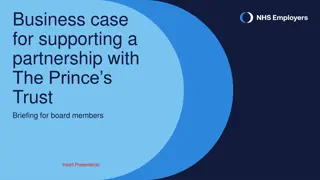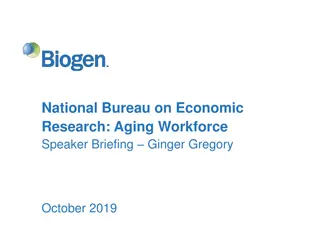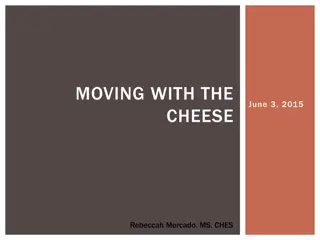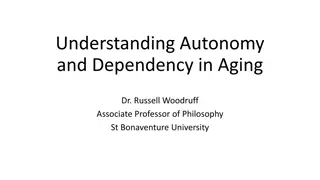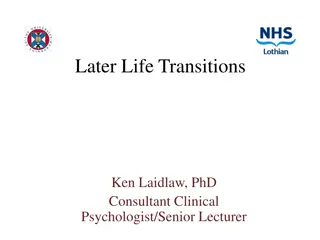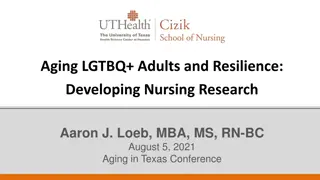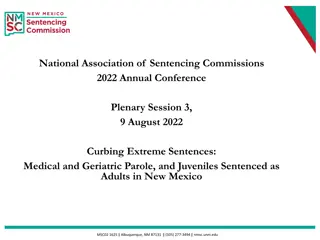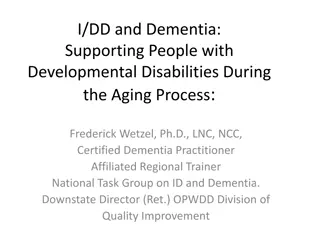Navigating the Challenges of an Aging Workforce
Learn about the impact of an aging workforce on organizations, including statistics, myths, advantages of older workers, and strategies for successful management. Discover insights on retaining, engaging, and transferring knowledge to ensure a thriving multigenerational workplace.
Download Presentation

Please find below an Image/Link to download the presentation.
The content on the website is provided AS IS for your information and personal use only. It may not be sold, licensed, or shared on other websites without obtaining consent from the author.If you encounter any issues during the download, it is possible that the publisher has removed the file from their server.
You are allowed to download the files provided on this website for personal or commercial use, subject to the condition that they are used lawfully. All files are the property of their respective owners.
The content on the website is provided AS IS for your information and personal use only. It may not be sold, licensed, or shared on other websites without obtaining consent from the author.
E N D
Presentation Transcript
The Aging Workforce Tools & Strategies for Your Organization 1
The SHRM Foundation Charity affiliate of SHRM Empowers HR professionals to build inclusive organizations where all employees thrive and organizations achieve success Works with SHRM & the Sloan Foundation to produce detailed resources on the aging workforce Learn more at shrmfoundation.org
The Reality: Why this Matters 35% of U.S. labor force participants will be age 50+ in 2022 (Up from 25% in 2002) 45% of unemployed people age 55 to 64 report being unemployed long-term, 27+ weeks (vs. 33% of unemployed 25- 34 year-olds) 10,000 Baby Boomers turn 65 every day Some industries hit hard by Boomer retirements/skills gap: Educational institutions Government Health care Oil and gas Manufacturing How will this affect your workplace? Does your organization have a strategy to recruit, retain and engage these workers?
Survey Results Chapter Survey Results SHRM Survey Results 58% have identified future workforce needs [if you have conducted the survey for your chapter or state, add your Aging Workforce survey results here, otherwise, just present the SHRM results] 52% have identified potential skills gaps in the next 1-2 years 35% have analyzed the impact of workers aged 55+ leaving their organization in the next 1-2 years
Dispelling the Myths Mature workers (age 50+) Do not cost significantly more Fewer organizations base salary on seniority/years of service than in the past Are more engaged 65% for workers 55+ 58% to 60% for younger workers Are more loyal & less likely to leave after training Unplanned turnover is often greater among Millennials than Boomers
Top 5 Advantages of Older Workers 77% -- More work experience/knowledge 71% -- More maturity/professionalism 70% -- Stronger work ethic 63% -- Ability to serve as mentors to younger workers 59% -- More reliability Source: SHRM Preparing for an Aging Workforce Survey
Goals of a Mature Worker Strategy Retain and engage older workers as long as possible Transfer their knowledge to younger employees Leverage their skills after they retire Recruit older talent from outside Source: SHRM Preparing for an Aging Workforce Survey
Take Action 1. Build the business case
Take Action 2. Assess the state of your aging workforce Do you need to expand your workforce to meet business demand? How many workers will be retiring in the next few years? How will you fill the gaps?
Take Action 3. Recruit & retain mature workers Foster an inclusive, age-positive culture Offer flexible work arrangements Support health & wellness Provide caregiver support Offer targeted skills training
Industry Reports Get your copy at: shrm.org/agingworkforce
SHRM Foundation Resources Strategies and best practices from leading companies Practical guidance for all size organizations Executive briefings to share with managers Get your copies at SHRMfoundation.org/aginginitiative
Thank You! Visit shrmfoundation.org/AgingInitiative to download complimentary resources 14
